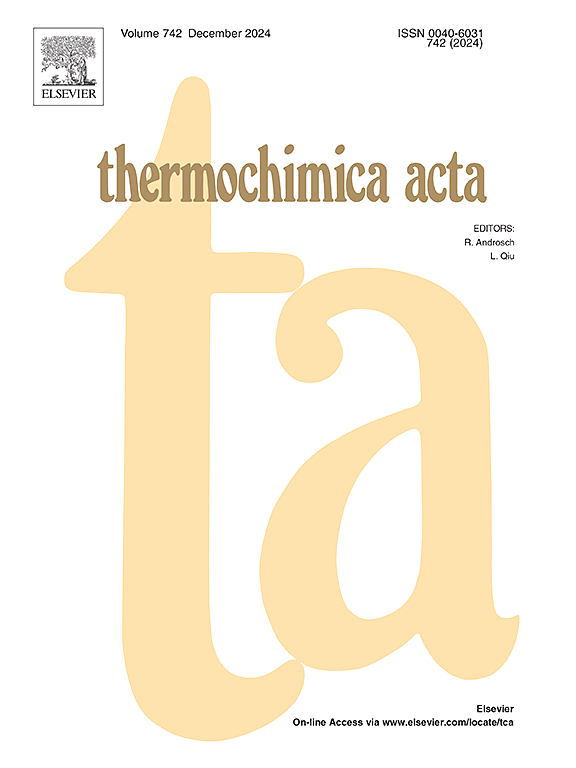利用超快焦耳加热结合 XRD、FT-IR、TG-DSC 和 SEM 对中国两种高岭土的热行为进行表征
IF 3.5
2区 化学
Q2 CHEMISTRY, ANALYTICAL
引用次数: 0
摘要
通过超快焦耳加热并结合 XRD、FT-IR、TG-DSC 和 SEM,对选自中国广西的砂质高岭土和内蒙古的硬质高岭土的热行为进行了表征。结果表明,砂质高岭土由高岭石、黝帘石和石英组成,硬质高岭土主要由高岭石组成,并含有少量锐钛矿。在超快焦耳加热过程中,砂质高岭土高岭石的层状结构遭到破坏,在 700 ℃ 时羟基全部丧失,而硬质高岭土在更高温度下脱羟基完成,并伴随着片状高岭石的破裂。在 1100 ℃ 时,绿泥石完全消失,并伴随着莫来石的形成,而石英则相对不受影响,在 1200 ℃ 时形成了由石英和莫来石相组成的砂质高岭土。相比之下,硬质高岭土莫来石相的转化率和结晶度明显高于砂质高岭土。本文章由计算机程序翻译,如有差异,请以英文原文为准。
Characterization of thermal behavior of two types of kaolin in China by ultrafast Joule heating combined with XRD, FT-IR, TG-DSC and SEM
Thermal behavior of sandy kaolin selected from Guangxi and hard kaolin from Inner Mongolia in China were characterised by ultrafast Joule heating combined with XRD, FT-IR, TG-DSC and SEM. The results indicated that the sandy kaolin was composed of kaolinite, muscovite and quartz, and hard kaolin was predominantly composed of kaolinite, with minor quantities of anatase. During ultrafast Joule heating, the layered structure of kaolinite of sand kaolin was destroyed, and all hydroxyl groups were lost at 700 °C, while dehydroxylation completion of the hard kaolin at higher temperature, accompanied by rupture of lamellar kaolinite. Muscovite disappeared completely and accompanied by the formation of mullite at 1100 °C, while quartz is relatively unaffected, resulting in the sandy kaolin consisting of quartz and mullite phases at 1200 °C. In contrast, the transformation rate and crystallinity of mullite phase of hard kaolin was significantly higher than that of sandy kaolin.
求助全文
通过发布文献求助,成功后即可免费获取论文全文。
去求助
来源期刊

Thermochimica Acta
化学-分析化学
CiteScore
6.50
自引率
8.60%
发文量
210
审稿时长
40 days
期刊介绍:
Thermochimica Acta publishes original research contributions covering all aspects of thermoanalytical and calorimetric methods and their application to experimental chemistry, physics, biology and engineering. The journal aims to span the whole range from fundamental research to practical application.
The journal focuses on the research that advances physical and analytical science of thermal phenomena. Therefore, the manuscripts are expected to provide important insights into the thermal phenomena studied or to propose significant improvements of analytical or computational techniques employed in thermal studies. Manuscripts that report the results of routine thermal measurements are not suitable for publication in Thermochimica Acta.
The journal particularly welcomes papers from newly emerging areas as well as from the traditional strength areas:
- New and improved instrumentation and methods
- Thermal properties and behavior of materials
- Kinetics of thermally stimulated processes
 求助内容:
求助内容: 应助结果提醒方式:
应助结果提醒方式:


